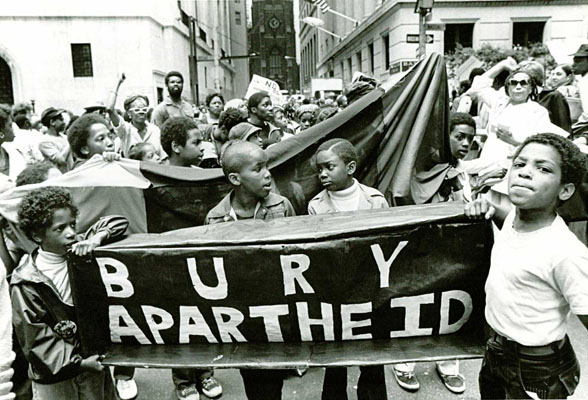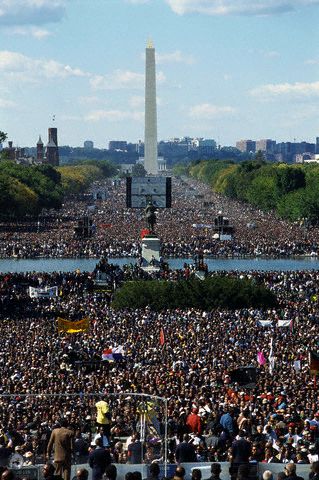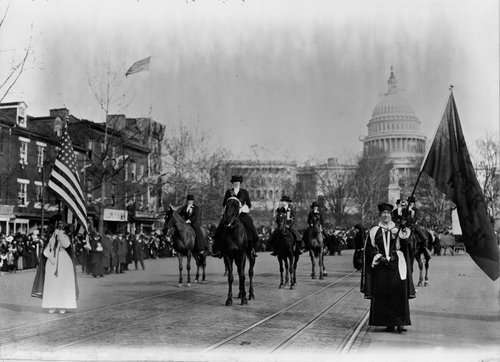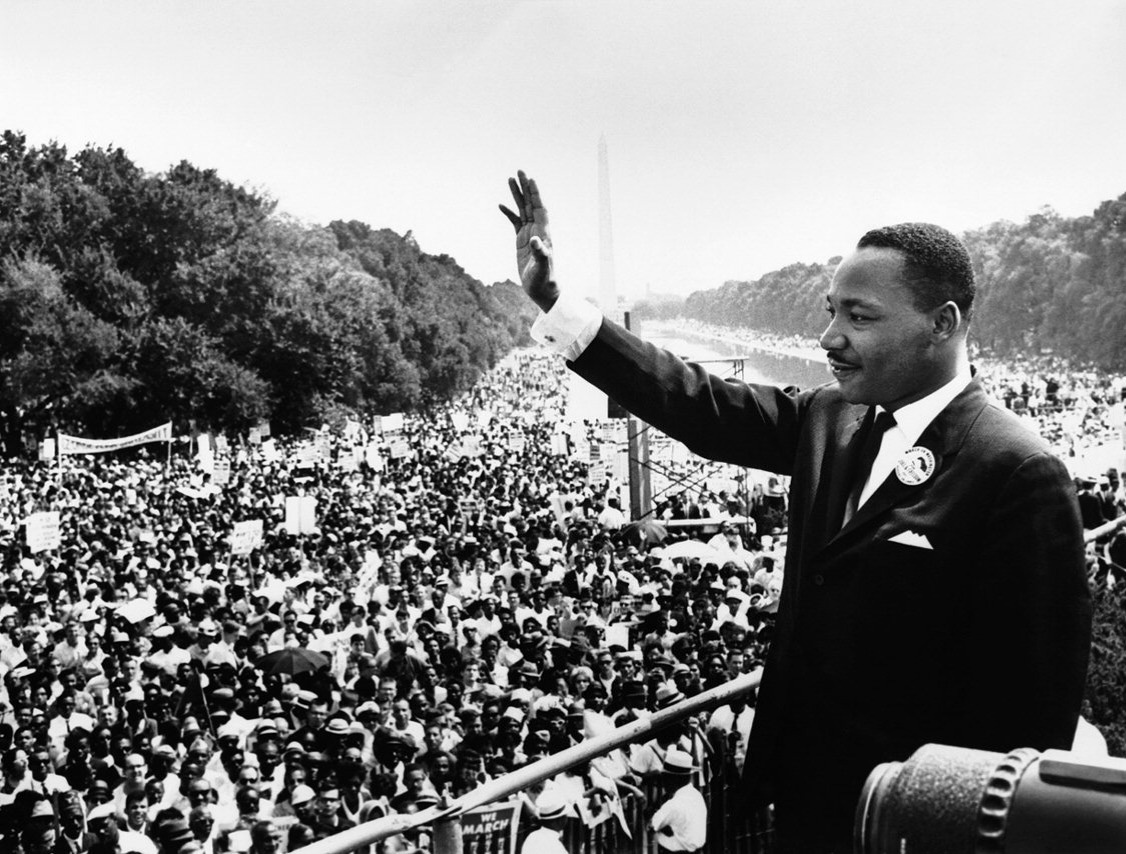Do Washington DC marches have any real impact? Great question. Let’s discuss.
It all began with a man named Jacob Coxey.
Feeling defeated during the economic depression of the 1890’s, the Ohioan business man led approximately 500 men to the capital in 1894. They demanded work from the government, but were arrested for “walking on the capital lawn.” By taking it straight to the federal government, public opinion branded the march as barbaric and menacing. Despite the less-than-warm reception, Coxey changed history and paved the way for more to come.
To bring their cause to the light, everyone from the woman suffrage to the civil rights to the anti-Iraq war to anti-high gas prices movements have all marched on Washington DC .
While the approximate 100 demonstrations may have weakened the “sting” of a massive demonstration’s impact, there is a place for demonstrations in the United States.
First, these demonstrations – at times – encourage policymakers to move.
The Free South Africa Movement found success by marching on Washington. The protests in 1984 called for sanctions against the  South Africa apartheid government, which was committing gross human rights violations. Paralleling what the group called for, U.S. Congress actually enacted legislative change.
South Africa apartheid government, which was committing gross human rights violations. Paralleling what the group called for, U.S. Congress actually enacted legislative change.
“[The call for sanctions] was controversial at first because the policymakers didn’t expect it,” said Mary Berry, the former chair of the U.S. Civil Rights Commission. “But as it grew and as support for it increased, [policymakers] sort of accepted the idea that something had to be done, and something was.”
Pro-choice marches have also influenced change. Ever since the court’s 1973’s ruling of Roe vs. Wade, abortion has been a decisive political issue, and demonstrations have maintained an influence on Supreme Court Justices.
“Supreme Court justices have said since that time that one reason why they didn’t overturn Roe vs. Wade – a couple of them have sort of intimated this – is because these huge marches that just kept coming,” said Berry.
Secondly, these demonstrations forge solidarity among members within social movements.
Instilling political change within society is a long and hard journey. Even with thousands of people demonstrating, the fruits of advocacy take time to bear. Fostering a sense of urgency and unity within social movements is very important, and a solid demonstration can be the catalyst to band people together for the long haul.
NPR Senior Washington Editor Ron Elving said that a demonstration “makes the people who actually attend the march…more active, more committed, more part of a particular movement.”
The Million Man March in 1995 worked to reactivate a particular group. The Nation of Islam’s Minister Louis Farrakhan called for “a  million sober, disciplined, committed, dedicated, inspired black man to meet in Washington on a day of atonement.”
million sober, disciplined, committed, dedicated, inspired black man to meet in Washington on a day of atonement.”
“Whether [march] made a big difference to the politics of 1996 in terms of the presidential election, maybe not a great deal of evidence,” said Elving. “But most of the impact would have been felt in the unifying sense that it gave black men.”
While discussing marches, it would be hard pressed to not talk about the March for Jobs and Freedom – the famous 1963 gathering where Martin Luther King Jr. gave his famous “I have a Dream” speech. Even though the march is credited with establishing the Civil Rights Act of 1964 and Voting Act of 1965, real change did not take place within the United States on that day, month or even that year.
“Dr. Martin Luther King’s ‘I have a Dream’ speech did not spark an ‘aha’ moment, causing the South to repudiate segregation in all its ugly forms,” said Colbert I. King, a Washington Post columnist. “Neither did the march ignite an ‘Arab Spring’ in America in which a majority of white Southerners launched revolutionary waves of strikes, demonstrations and rallies against the homegrown system of racial inequality festering in their minds.”
While the march may have fostered a sense of urgency around the civil rights movement, the success goes well beyond legislative wins.
“There was not some instant change, but it gave a reference point back for people that these people of different colors gathered together,” said Lucy Barber, author of “Marching on Washington.”
Creating a sense of solidarity, the march carried the movement forward and moved the movement past obstacles and to a point where society is today.
What Jacob Coxey, Louis Farrakhan and MLK have shown is what bringing massive amounts of people together can do. These gatherings and speeches propelled a movements culture and brought people in through not only wanting to see change but demanding it.
— Stew


Think people should hear about this?